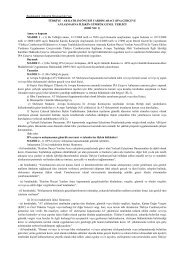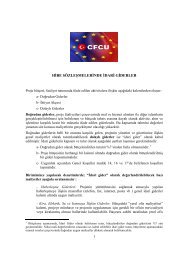Project Cycle Management Training Handbook - CFCU
Project Cycle Management Training Handbook - CFCU
Project Cycle Management Training Handbook - CFCU
Create successful ePaper yourself
Turn your PDF publications into a flip-book with our unique Google optimized e-Paper software.
2<br />
<strong>Project</strong> <strong>Cycle</strong> <strong>Management</strong> <strong>Training</strong> <strong>Handbook</strong><br />
Process<br />
management<br />
1.2 Quality <strong>Management</strong><br />
At field-level, project preparation, implementation and evaluation is<br />
undertaken by consultants or partner governments and organisations.<br />
The role of Commission staff is to manage the process of preparation,<br />
implementation and evaluation. As process managers, you therefore<br />
need tools and techniques which help you to support and control the<br />
quality of outputs produced during the process – for example, to<br />
identify information needs for preparatory studies; to plan appraisal<br />
missions; and to check the quality of project proposals.<br />
Figure 2 gives an overview of the tools that are already available in<br />
the training programme, and shows how they can be used to manage<br />
quality. All of the tools mentioned are covered in more detail later on<br />
in the handbook.<br />
1.3 Contents<br />
The tools and techniques outlined in the handbook are designed to<br />
assist you in preparing and managing your projects. :<br />
� Chapter 2 introduces you to the project cycle, describing its<br />
phases and explaining its role in aid management. It presents<br />
an overview of <strong>Project</strong> <strong>Cycle</strong> <strong>Management</strong>.<br />
� Chapter 3 introduces you to the Logical Framework<br />
Approach (LFA), explaining its role in project design with a<br />
simple project example. It explains how sustainability factors<br />
can influence a project’s chances for success, and indicates<br />
the range of tools that are available to you to take account of<br />
these factors.<br />
� Chapter 4 explains how you can use the logframe matrix to<br />
develop objective-oriented workplans and budgets, and<br />
presents a step-by-step approach to the preparation of activity<br />
and resource schedules.<br />
Add your own notes here…





